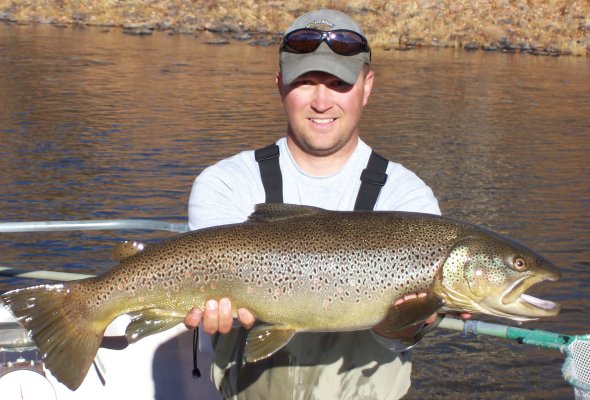Cribbage BoardsCribbage PegsPersonalized PegsCyber Monday Deal 1Cyber Monday Deal 2Stocking StuffersWholesale Bulk PegsPlaying CardsBooks on CribbageOther GamesNew ProductsCustomer ReviewsCribbage Blog

Toll Free:
1-877-MUGGINS
(877-684-4467)
E-Mail:
muggins@cribbagesupply.com
CribbageSupply.com
13618 County Road 748
Sandy Point, Texas 77583

Cribbage Boards
| Home • All Products • Brown Trout Cribbage Boards
Brown Trout Cribbage Boards DISCONTINUED
OUT OF STOCK
Premium Package:
This Complete Cribbage Set Includes
» 6 Austrian Crystal Cribbage Pegs on Polished Brass with
Shiny Gems chosen to Compliment your Cribbage Board Colors
» U.S. Playing Card Company Playing Cards
» Cribbage Rules and Instructions
Basic Board:
> 4 wood pegs
Cribbage Board Dimensions are 15.75 by 7.5 inches

The brown trout is a medium-sized fish,
growing to 20 kg or more in some localities although in many smaller rivers a
mature weight of 1 kg (2 lb) or less is common. The spawning behaviour of brown
trout is similar to that of the closely related Atlantic salmon. A typical
female produces about 2,000 eggs per kilogram (900 eggs per pound) of body
weight at spawning. On Sept. 11, 2009, a 41.45 lb (18.80 kg) Brown trout was
caught by Tom Healy in the Manistee river system in Michigan, setting a new
state record and possibly, a new world record for Brown trout. As of late
December 2009, the fish captured by Mr. Healy was confirmed by both the
International Game Fish Association and the Fresh Water Fishing Hall of Fame, as
the new all tackle world record for the species. This fish now supplants the
former world record from the Little Red River in Arkansas.
Brown trout can live to ages of 20
years. But as with the Atlantic salmon, there is a high proportion of death of
anadromous males after spawning and probably fewer than 20% of anadromous female
kelts recover from spawning. The migratory forms grow to significantly larger
sizes for their age due to abundant forage fish in the waters they spend most of
their lives. They are active both by day and by night and are
opportunistic feeders. While in fresh water, the diet will frequently include
invertebrates from the streambed, other fish, frogs, mice, birds, and insects
flying near the water's surface. The high dietary reliance upon insect larvae,
pupae, nymphs and adults is what allows trout to be a favoured target for fly
fishing. Sea trout are especially fished for at night using wet flies.
|
|
|

